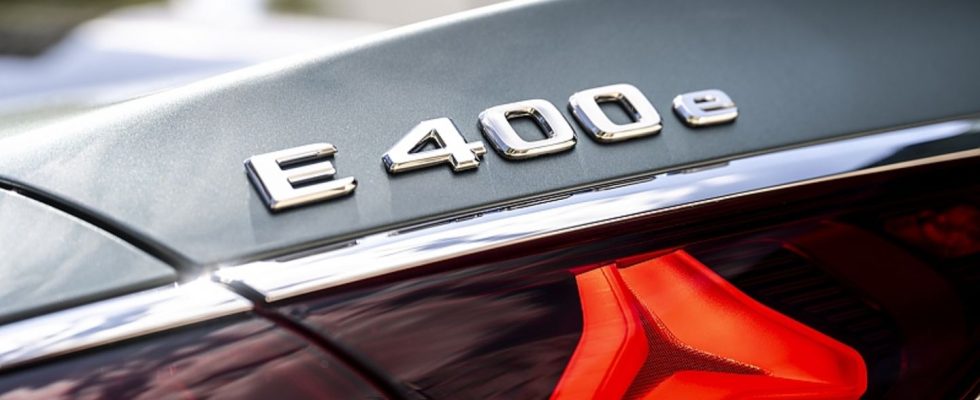Driving report: Mercedes E 400e 4matic
Pushed to the edge
Mercedes E 400e 4matic
© press-inform – the press office
Restarting a Mercedes E-Class used to be a big deal in the automotive world – and what a big deal. But times have changed and even with the Swabians, the electric models with the EQ label have long been setting the tone. Although the E-Class is not available purely electrically, it is otherwise a big hit.
As expected, the upper class from Swabia offers a wealth of high-tech equipment and comfort without any limits worth mentioning. The fact that driver assistance level three is not planned for the new flagship from Stuttgart may, to put it mildly, be just as surprising as the Mercedes E 300 de, which is still in the range, because nobody would really miss a plug-in hybrid diesel, because the normal diesel engine is economical enough. If hybrid, then please the E 400e, which should be a good choice between head and heart for many customers. Despite the misleading nomenclature, the plug-in hybrid carries the power of two hearts. The two-liter turbo four-cylinder with 185 kW / 252 hp is supported in terms of propulsion by an electric motor that contributes a further 95 kW / 129 hp. The driving performance is corresponding due to the impressive total output of 280 kW / 381 hp and 650 Nm. Apart from the sport mode, the recuperation levels can be set via the shift paddles – up to level D up to one-pedal drive, in which the brakes remain almost idle.
From a standing start, the obligatory all-wheel drive vehicle accelerates to 100 km/h in 5.3 seconds and the top speed is limited to 250 km/h. The fuel consumption is truly microscopic at 0.6 to 0.9 liters per 100 kilometers with a fully charged battery pack. If you are traveling electrically alone, you can cover an impressive 95 to 109 kilometers to the next charging stop and consume almost 20 kWh per 100 kilometers at the socket. This is made possible by a 25.4 kWh battery pack, of which 19.5 kWh can be used. It can be recharged with 11 or up to 55 kW – just as you wish. The drive package consisting of the two engines, all-wheel drive and a finely tuned nine-speed automatic transmission is great, because depending on the driving program, speed and requirement profile, both drive modules ensure propulsion that is as gentle as it is powerful. Thanks to the 650 Nm system torque, the boost is impressive without delay when performance is requested, and the E-Class skilfully mimics the big cruiser, and not just when it comes to electric crawling. The only downside is the engine sound, because the supercharged four-cylinder is superficially quiet, but sounds inharmonious and overly strained when sprinting. At least here, at least two more combustion chambers are sorely missed, which currently only the Mercedes E 450 4matic offers its customers. If the less than sovereign sound bothers you, simply turn up the volume on the sound system and let the sound come from 17 speakers and four structure-borne sound converters – with 730 watts. Even more impressive are the countless driver assistance systems, where the E-Class alone fails at level three. This is reserved solely for the Mercedes S-Class and the EQS.
The level of comfort is in a class of its own with excellent air suspension and dampers, which, like the drive, adapt entirely to the driver’s requirements. The rear-axle steering is linked to the variable air springs, with which the 4.95-metre-long luxury-class sedan gains maneuverability, particularly during parking manoeuvres, as the rear wheels can turn by up to 4.5 percent. This reduces the turning circle from 12.0 to 11.1 meters. The maximum of five occupants inside the E-Class don’t notice any of this. You will enjoy excellent seats in the front and rear and the low noise level that the excellent insulation of the passenger compartment brings with it. Thanks to the increase in wheelbase to 2.96 meters, the rear passengers in particular have more space than before. The load space in the plug-in hybrids is still manageable at 370 liters; but the annoying edge in the trunk floor has at least disappeared. With 540 liters, however, it is lavish for the versions without hybrid drive alone. Mercedes is currently silent on the price. It can be assumed that the basic version of the new E-Class will start at just over 60,000 euros. The 381 hp E 400e 4matic should easily cost 80,000 euros with solid comfort equipment.

